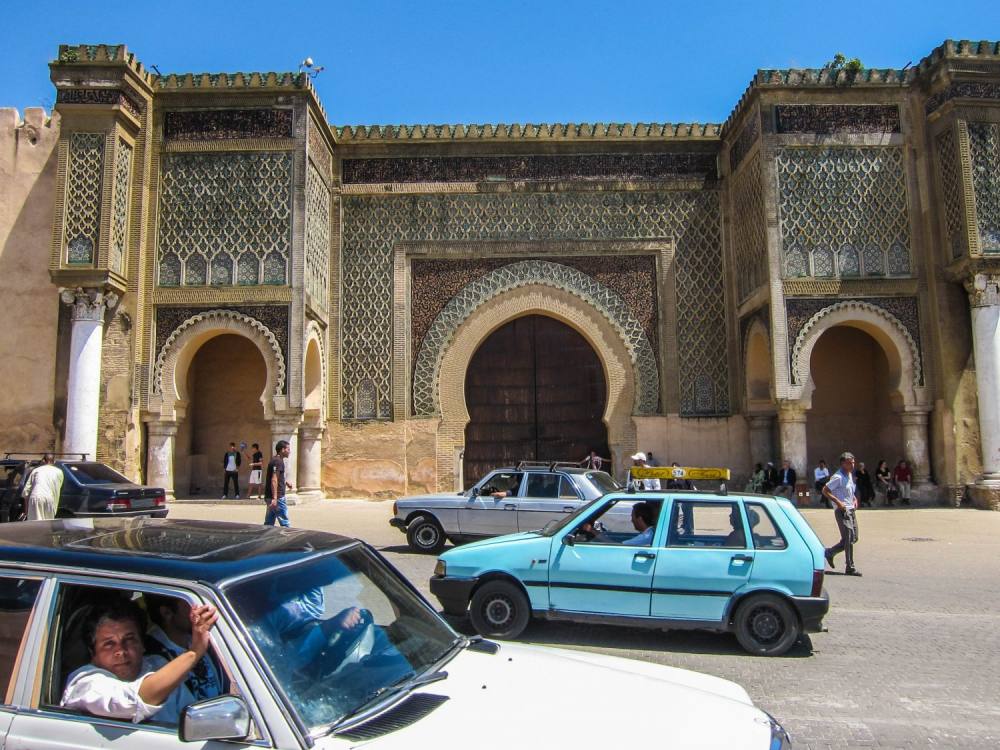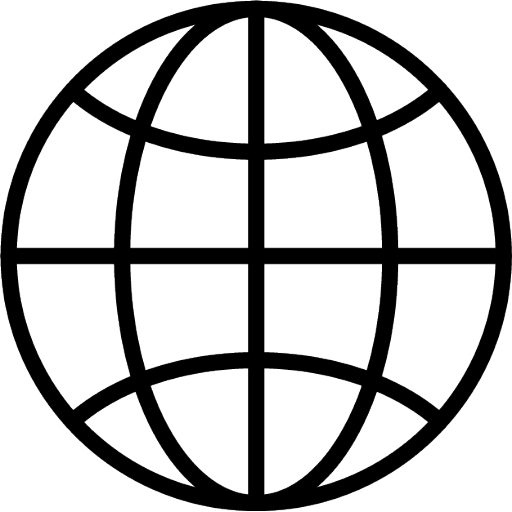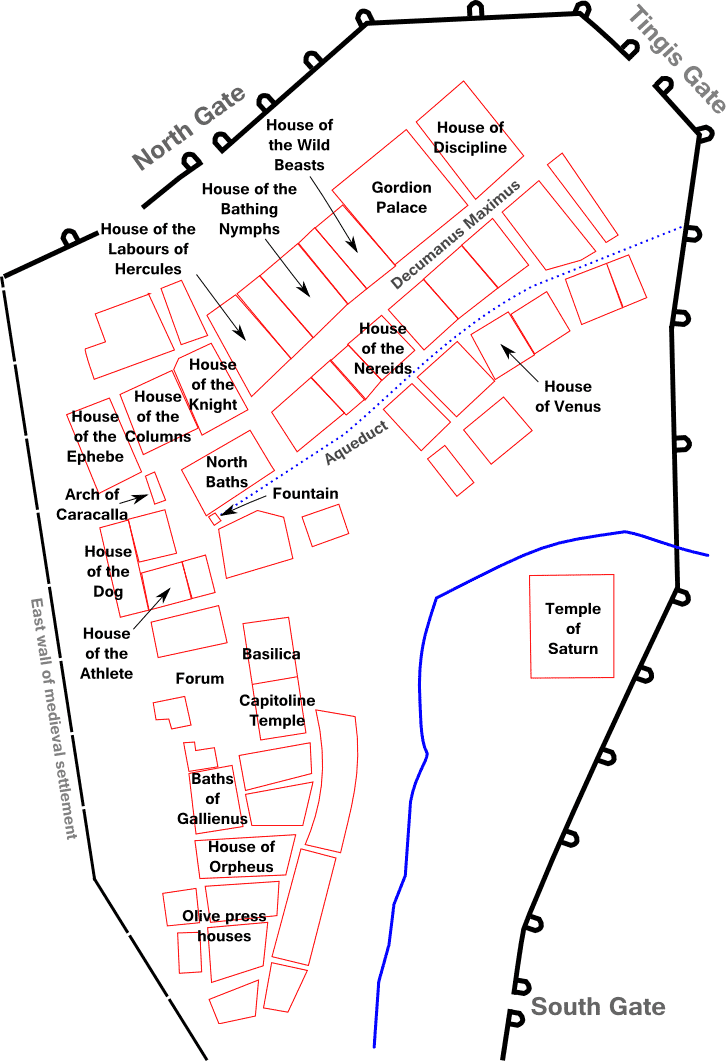- Meknes is the least well-known of Morocco’s four imperial cities, but we found it a fine place to visit. It was established in the 11th C by the Almoravid dynasty as a military settlement. The city sits on a fertile plain below the Middle Atlas mountains, on the Oued Bouferkrane watercourse (which is usually dry).
- Meknes became the capital of Morocco under the reign of Sultan Moulay Ismaïl (1672–1727), head of the Alaouite dynasty which rules to this day. Moulay Ismaïl created a massive imperial palace complex with extensive fortifications and monumental gates in Spanish-Moorish style. The Historic City of Meknes is a World Heritage site.
- The fertile plains around Meknes attracted settlers long before the Almoravids arrived. About 30 kms north of the city lie impressive Roman ruins at the Archaeological Site of Volubilis, also a World Heritage site.
- Nearby is the mausoleum of Moulay Idriss, great-grandson of the Prophet Mohammed and founder of Morocco’s first dynasty (ruled from 788-791).
- We caught the train from Casablanca to Meknes which went smoothly. Got some help from the staff at our Casablanca hotel to buy train tickets.
- Our riad was in the Medina district, just off the main square called Place el-Hedim. After checking in and freshening up we visited the Dar Jamai palace built in 1882, and now a museum.
- From there we wandered past the massive gateway of Bab el-Mansour, via the wool market and into the imperial city to visit the Mausoleum of Moulay Ismail. This beautiful building has a series of simple courtyards which lead to a lavishly decorated tomb hall. All in all it’s a lovely example of Moorish architecture.
- A couple of kms to the southeast lies Heri es-Souani, the massive granary and stable complex built by Moulay Ismail. Foregoing a hot and sweaty late afternoon walk we opted to ride there in a caleche (horse-drawn carriage).
- It’s said that Heri es-Souani provided stabling and food for 12,000 horses, and walking beneath its enormous arches is humbling. Just to the north lies a large, stone-lined lake called Agdal Basin, fed by an extensive network of irrigation channels. A statue of a traditional water seller reminds us that the ruling class didn’t give anything away.
- We caught another caleche back to Place el-Hedim, admiring modern Moroccan commerce along the way.
![Dar Jamai Museum, courtyard]()
Dar Jamai Museum, courtyard
![Mausoleum of Moulay Ismail]()
Mausoleum of Moulay Ismail
- The next day we wanted to day trip to the Roman ruins of Volubilis and the pilgrimmage site of Moulay Idriss. Navigating the bus system did not look easy so we opted for a ‘grand taxi’. We chose an older guy (Mustafa) who offered what we wanted at a price that was within expectations set by the research we’d done. He drove us to Volubilis and waited for two hours while we explored the site, then took us back to Meknes via Moulay Idriss. It worked out fine.
- Volubilis was established as a Berber city then Carthaginian outpost around the 3rd century BC, and is widely accepted as being capital of the ancient kingdom of Mauretania.
- It prospered under Roman rule from around 40 AD to 280 AD and the most impressive ruins and mosaics visible today date from this period.
- Moulay Idriss found sanctuary here when fleeing from Abbasid persecution in Mecca around 789, before establishing his capital at Fez. The city was abandoned by the 11th C with the population relocating to nearby Moulay Idriss Zerhoun. The ruins remained largely intact until they were extensively damaged by the Great Lisbon Earthquake of 1755.
- What remains is however very much worth a visit. We began our tour in the northeast corner of the site, at the Tingis (Tangier) Gate, then followed the main road of Decumanus Maximus.
- The House of Venus located south of the road has some fine mosaics. Several houses to the north of the road also have well-preserved mosaic floors.
- Just past the House of Columns you reach the Triumphal Arch built in honour of the Emperor Caracalla in 217 AD.
- Nearby is the Basilica, Capitoline Temple, and Forum. Storks nest on top of the reconstructed columns.
- Our visit finished at the Baths of Gallienus and the House of Orpheus, which has a large, circular mosaic showing the god playing his harp to an audience of trees, animals and birds.
![Triumphal Arch of Caracalla]()
Triumphal Arch of Caracalla
- Nearby Moulay Idris Zerhoun is a pretty town with whitewashed buildings draped over two hills at the base of Mount Zerhoun. Its centrepiece is the Mausoleum Of Moulay Idriss (Idriss I), founder of the Idrissid dynasty. It was Morocco’s first Muslim dynasty and lasted from 788 to 974, though Idriss I died early on (in 791) and it was his son Idriss II who consolidated the dynasty ruling from 791 to 828.
- Much of the current mausoleum complex was built by Moulay Ismail in the early 18th C. As a pilgrimmage site, non-Muslims were forbidden entry to Moulay Idriss Zerhoun for many years. This was relaxed in the early-20th C, though non-Muslims could not stay in the town until 2005 and can still not enter the inner mausoleum complex. The attraction is finding vantage points around the town to view it from afar, and local guides tout assertively for the business of taking you to the best spots.
- Our grand taxi dropped us back in Meknes and we took some time to relax in our beautiful riad.
- In the late afternoon we ventured out to visit the Medressa Bou Inania, a religous school for studying Islam. It was built in 1358 and is beautifully decorated in the style of the Marinid (or Merenid) dynasty (1244 to 1465).
- From the rooftop there are good views of the Grand Mosque.
- We wandered through busy market squares and quiet lanes in the early evening to finish off a fabulous day.
- Both of us succumbed to ‘Berber belly’ overnight and the next day was very low key. Being a nurse, Julie’s medical travel kit had always been large and I’d been known to make fun of this fact. Never again! Her ‘gastro bombs’ saved my life in Meknes…






















































